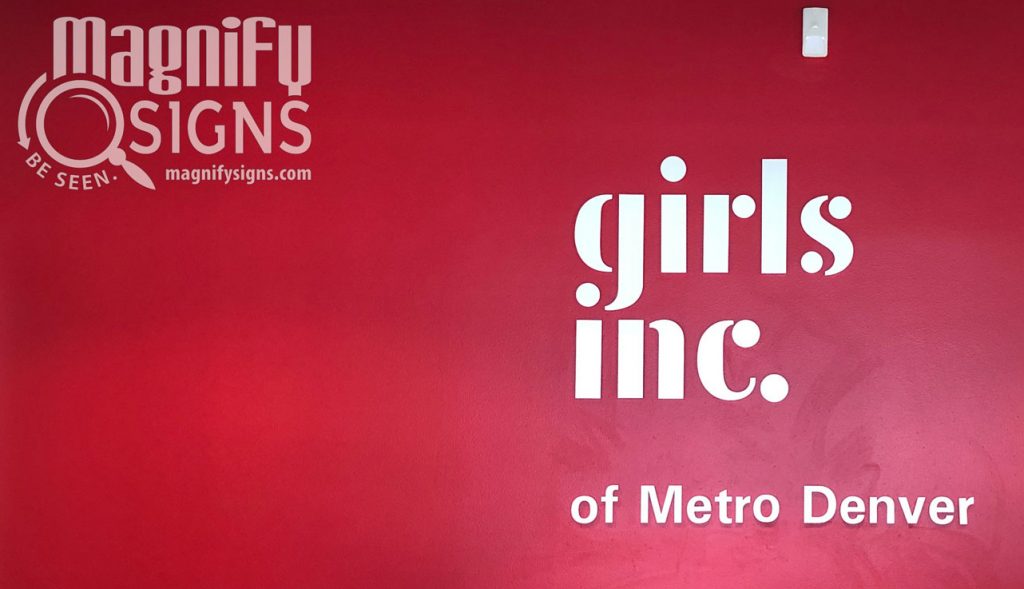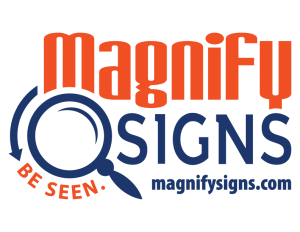What do a chic boutique on a busy high street, a bakery downtown, and a book store at the corner of a little street have in common?
They all rely on their shop signage to stand out and attract customers.
Research has shown that for a new business, signage attracts 50% of its new customers. Once you are established, a large percentage of passersby are people who walk in front of your shop at least once a day on their way to work.
This is how important successful shopfront signage is. Your shop sign works hard for you every single day. It creates an initial impact for those who see your shop for the first time. It imprints your brand to those who repeatedly walk on your sidewalk or drive in front of your business.
So, how can you make the most of your shop signage and maximize its benefits?
The color scheme of the shop sign matters
 The most important function of your shop sign colors is to make your shop recognizable and to stay with the customer. Big retail brands become associated with a color. For example, the green and white color combination comes to mind immediately when it comes to Starbucks (read here why signage is a key part of your business branding).
The most important function of your shop sign colors is to make your shop recognizable and to stay with the customer. Big retail brands become associated with a color. For example, the green and white color combination comes to mind immediately when it comes to Starbucks (read here why signage is a key part of your business branding).
Keep your shop sign colors distinctive—but always consistent with your logo. Your branding needs to be consistent in all marketing materials you use, from your shop front to the signage in the shop, business cards, website, etc.
Remember that colors speak to the customers. There is extensive research on how people perceive each color and attach a meaning to it. For example, red is energetic, blue speaks of reliability, black is all about prestige and so on.
When you choose your color palette for your external and internal signage, make sure that the story your colors tell the customers is consistent with the story you wish to convey.
Typography is about both style and function
Choosing fonts and lettering about your signage is where you can get creative, as the options are almost unlimited (for some helpful tips on choosing the right font for you, check out also our post, what are the best fonts for a business sign?).
Avoid boring typography and use it to stand out. Shop sign lettering communicates your business aesthetics and vibe, so find fonts and lettering that represent your business and speak to your customer target group.
At the same time, don’t forget function.
Your shop sign’s most important function is to be readable. Avoid typography that is hard to decipher, like all caps or too cursive, and choose a contrasting background color.
Keep in mind that ideally, your shop sign should be readable from a distance, like from the opposite sidewalk in a large street, and at an angle. Also, remember that many passersby will be in their car and will be exposed to your sign for a few seconds only.
Make your sign easy to read from a car, from a distance, at a glance, and make it stylish. It sounds difficult, but a professional designer can make it true for you.
Make your message clear
 A shop sign is your first communication medium with your potential customers. It’s quite natural that you want to communicate as many things as possible through your shop sign.
A shop sign is your first communication medium with your potential customers. It’s quite natural that you want to communicate as many things as possible through your shop sign.
However, you cannot and should not try to tell it all with a sign, or you risk confusing the eye and drowning out your main message in too much information.
Passersby are exposed to your sign for only a few seconds, and they will not read a busy inscription. Keep your signage text clear, short, and sweet.
Also, avoid saying too little. Your shop sign should give enough information about your products and services. If your brand is a name rather than a word or phrase, you need your shop sign to specify what it is you offer. If your brand is “Mary’s Corner”, add “Bakery”, or “Bookshop”, or “Manicure” in your sign instead of leaving the passersby to wonder what they can shop in Mary’s corner.
You could also include recognizable symbols in your signage to get the message across. A green cross says “pharmacy”, a cat and dog say “pet shop”, a croissant says “bakery.” Symbols are shorthand language. They are quickly perceived and can complete wording efficiently.
Think shop sign installation, cost, and maintenance
There are sometimes limits to how creative you can get with your shop front. For example, maybe your shop front already has a shop sign support and you want to use it. Local regulations, the way your shop facade is built, or other practical considerations may also limit your options.
Then, there’s your budget. Your budget will necessarily guide your choice. Vinyl lettering on a painted facade is probably the less costly solution. Acrylic lettering allows for interesting cutting and can be flat cut or 3D raised cut. Metal letters cost more and can require more complex installation, but add volume to your shop front and can be illuminated to improve visibility at night (for a detailed look at your options, check out our post, things to consider when investing in a storefront sign).
One thing you should not forget is that your shop front will need maintenance. For example, a timber background will need much more maintenance than an aluminum backboard panel. Also, if your lettering is illuminated, you will need to change bulbs and lights to avoid a shop sign that blinks or only partially lights up. 3D lettering may need a periodical inspection to avoid having letters fall.
Ask for maintenance costs and take them into consideration when you design your shop sign to avoid surprises later.
Covering the basics above will ensure you get a good shop sign. But if you aim for great, here are some more things you could consider.
Look at your neighbors
A good shop sign makes your business stand out in a positive way. When you design your shop front sign, take into consideration features of your environment like the competition on the same street, the shops that surround yours, and the neighborhood vibe.
For example, your sign should stand out from the shops next to yours, so avoid the same color combination or shoppers may assume you’re actually one shop.
If the street and your shop facade follow a traditional architecture and have a vintage style, find a balance between standing out and fitting in.
Think shop front instead of shop sign
 A good front shop sign is necessary, but to take it to the next level you should think of your shopfront as a whole. For example:
A good front shop sign is necessary, but to take it to the next level you should think of your shopfront as a whole. For example:
- Consider the efficiency of your signage from different distances. A sign at the top of your front is visible from a distance. However, you should also consider signage at eye-level for the customers who walk on the sidewalk, where they can see it without raising their heads.
- Consider adding signage to your shop window. Window signage could be permanent or seasonal. Either way, it should be consistent with the elements of your shop sign (colors, typography). Sales and promotions signage are commonly displayed on the shop window.
- Consider portable signs in front of your door. Announcing the day specialty on the sidewalk if you have a coffee shop or a bistro can make a strong impact and attract customers.
- Avoid clutter. By seeing your shop front as a whole, you avoid cluttering it with too much signage, too much information, and too many styles. Make sure that every element of your signage has room to breathe.
Take signage inside
You probably need internal signage on top of the external shop sign. It can be a good idea to take the main shop sign concept inside too, to enhance your identity and branding and to create a consistent customer experience.
Magnify Signs can help you make the most of your shop signage and maximize its benefits. Contact us now for your FREE quote or call us at 303-647-1925 to learn more about our services!


